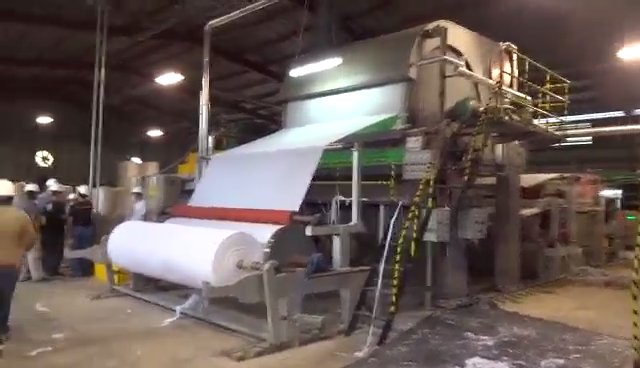MACHINE FOR TISSUE PAPER MAKING PLANT
Tissue paper making plant typically involves a series of machines and processes to transform raw materials like wood pulp, recycled paper, or synthetic fibers into finished tissue paper.

Here's an overview of the main machines and steps involved in tissue paper production:
1. Pulping machine: The first step in the tissue making process is to convert the raw materials into a pulp. Wood pulp is commonly used, but recycled paper and synthetic fibers can also be used. The pulping machine shreds and processes the raw materials, resulting in a fibrous slurry.
2. Screening: The fibrous slurry is passed through a series of screens to remove large particles and impurities. The screens have different mesh sizes to ensure that only the finest fibers pass through.
3. Refining: The screened pulp is further refined to create a uniform mixture of fibers. This is done using machines called pulp refining systems, which consist of metal drums with rotating teeth that squeeze and break up the fibers.
4. Pulp drying: The refined pulp is dried using a machine called a dryer. This machine consists of a large drum heated by steam or hot air, which evaporates the water from the pulp, leaving behind a sheet of wet tissue paper.
5. Creping: After drying, the tissue paper sheet is passed through a machine called a creper, which imparts a wavy or corrugated texture to the paper. This helps the tissue to be more flexible and strong.
6. Sheet transferring: The wet tissue paper is transferred from the dryer to a series of rollers, which transport it to the next stage of the process.
7. Pressing: The tissue paper is passed through a series of presses, which apply pressure to remove excess water and improve the paper's density and strength.
8. Drying: After pressing, the tissue paper is dried again using heated air or radiant heaters to remove any remaining moisture.
9. Calendaring: The dried tissue paper is passed through a series of rollers called calenders, which smooth the surface of the paper and give it a uniform thickness.
10. Roll winding: The finished tissue paper is wound onto large rolls for further processing or distribution.
11. Reeling: The wound tissue paper rolls are sent to the reeling machine, which cuts the paper into smaller rolls or sheets based on the desired final product.
12. Packaging: The finished tissue paper rolls or sheets are packed into boxes or cartons, ready for shipment and distribution.
Note that the exact machinery and processes involved may vary depending on the specific production requirements and the type of tissue paper being produced. Tissue paper making plants typically use a combination of automated machines and skilled labor to ensure efficient and high-quality production.